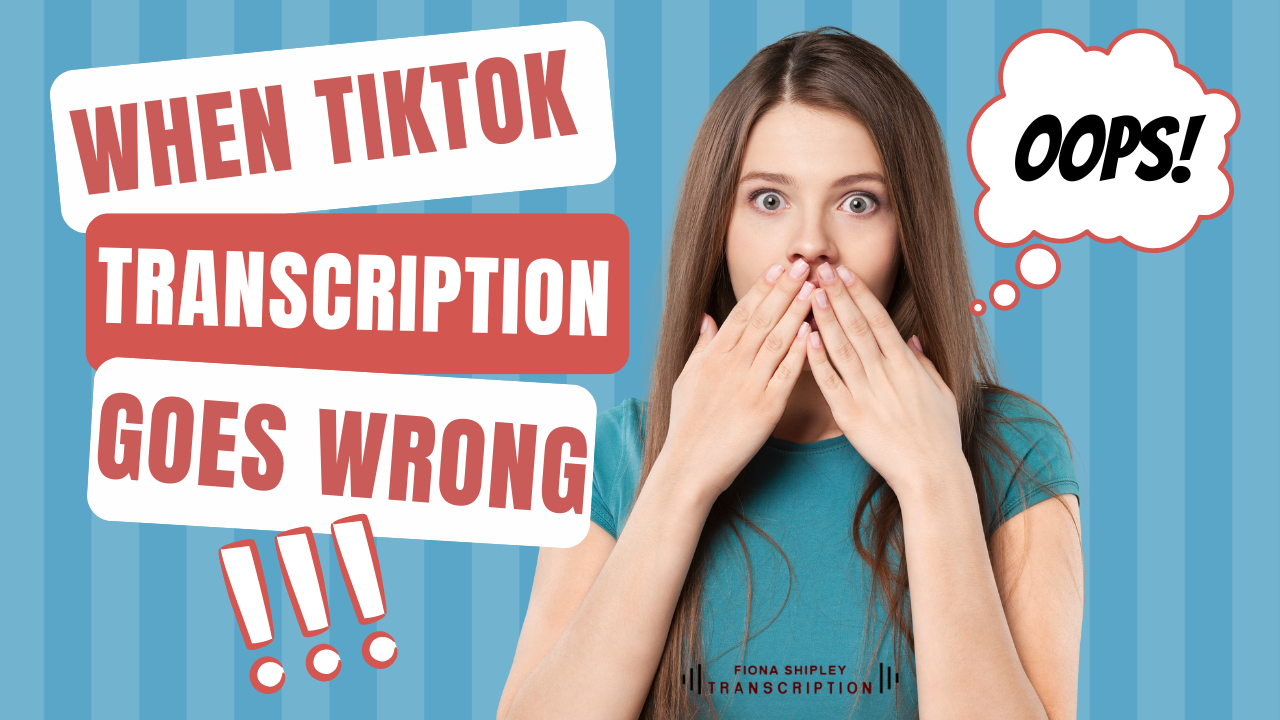We always find it interesting to read about when AI has missed the mark with transcription – and this article we stumbled across made us smile, as it covers an issue we’ve highlighted a number of times before…
When TikTok transcription goes wrong…
The AI behind social media platform TikTok has by all accounts made a faux pas with one particular TikTok star who goes by first name Em and has over 14.7 million watchers on her page – for one of the reasons we’ve highlighted before…
Boasting over 500,000 followers and raking in the brand deals, Em isn’t doing too badly out of TikTok. But, despite the obvious love for the northern lass, she has confessed that TikTok has repeatedly removed her videos because the technology that transcribes what she is saying converts what she is innocently saying into rude words (which aren’t permitted by the social media platform).
How TikTok transcription is changing
There’s been a significant rise in the use of subtitles and captions in recent years, predominantly in the younger generations. TikTok has now made a strategic move by upgrading their captioning and translation tools to offer a more advanced service. In the past, creating captions was purely down to the recollection of the creator as they had to turn on auto-generated captions on their clips before publishing. If you didn’t begin the process with captions enabled there was no way to add them later. You would need to erase a post and start again. This was particularly frustrating for hard-of-hearing and deaf viewers who found that they had to ask other viewers to turn them on.
Why is TikTok transcription important?
If a creator is looking to maximise their reach using captions can prove incredibly beneficial for the international reach of your content. As the sharing of business clips and events increases, tapping into this growing market is a savvy move. But when you consider the issues that can arise with the automated transcription tools we talked about at the beginning of this blog, our advice would very much be to check, check and check again if you have a strong regional accent… or you may find those posts don’t pass the technology checks!
Human transcription – we “get” the accents!
When we look outside of the world of TikTok and look at other examples of transcription, AI is often only trained using American English and traditional British English accents so any other accents can be a real problem for voice recognition technology. It’s one of the reasons why Apple introduced the option to train Siri over time to recognise your own voice, in an attempt to be able to understand you and how you sound better. This is to minimise getting that translation wrong.
Being able to understand and correctly transcribe the nuances of an accent – whether that be as a result of a different dialect or because the individual is a non-native English speaker – is of course fundamental when providing accurate transcription of the spoken word. This is where experience comes in, and the transcription team at FSTL has experience in droves.
To find out more about how we can help your organisation with transcription services as you get back to business, please call us on 01737 852 225 or email alex@fionashipley.com.

